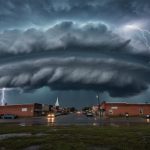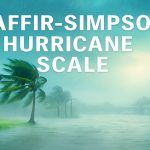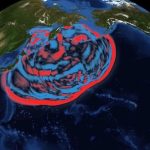Author Archives: iAlert.com
The Life Cycle of Thunderstorms
Did you know that 1,800 thunderstorms occur at any moment around the world?? That is 16 million a year!?? So what causes thunderstorms? Thunderstorms need three things to develop: Moisture: To form clouds and rain Unstable air: Warm air that can rise rapidly … Read More…
What is the difference between FREE and Paid iAlert.com single location alert services?
All iAlert.com services are listed at http://iAlert.com/services and you may notice there is a “Free Severe Weather and Emergency Alerts Single Location” and “Paid Severe Weather and Emergency Alerts Single Location” service. These services are the basically same except for how text messages … Read More…
What services are offered by iAlert.com?
Access to all iAlert Services is done through the “iAlert Service Cart” by clicking here. SERVICE SUMMARY: Severe Weather and Emergency Watch, Warning, and Advisory Alerts for Unlimited City Locations: Premium members can select to receive nearly 100 different severe weather and emergency … Read More…
Configuring the “Impact Weather Observation Alert Monitoring” Service
iAlert.com offers an “Impact Weather Observation Alert Monitoring” service. This service monitors nearly 2000 U.S. weather stations in real-time and sends email and/or text alert notifications when your select temperature, dew point, windchill, heat index, wind speed, visibility and/or hourly rainfall criteria are … Read More…
The Ultraviolet (UV) Index Scale
The Ultraviolet Radiation Scale or UV Index scale represents the risk of sun exposure and steps to protect yourself from UV radiation are listed below UV Index 0 to 2 (Low) A UV Index reading of 0 to 2 means low danger … Read More…
What is ultraviolet (UV) radiation?
The American Cancer Society (cancer.org) describes exposure ultraviolet (UV) radiation as a major risk factor for most skin cancers. Sunlight is the main source of UV rays. Tanning lamps and beds are also sources of UV rays. People who get a lot of … Read More…
How to Enter Mobile Phone Activation Code
iAlert.com members who want Severe Weather and Emergency Alert notification messages sent by text message must first validate and link their mobile phone to their account. This is done by iAlert sending a “validation code” text message, with three ways for members to … Read More…
Weather Storm Report Alerts by Email and Text Message
Storm Report Alerts: During severe weather events local emergency managers, police, fire, and trained weather spotters submit storm reports across the U.S. iAlert monitors and sends these reports by text message and/or by email. Reports, many of which contain latitude/longitude values, include tornado … Read More…
-

-
Thunderstorm Basics: Structure, Types, and Forecasting Methods
August 29, 2025
-

-
Saffir-Simpson Hurricane Wind Scale
June 9, 2025

